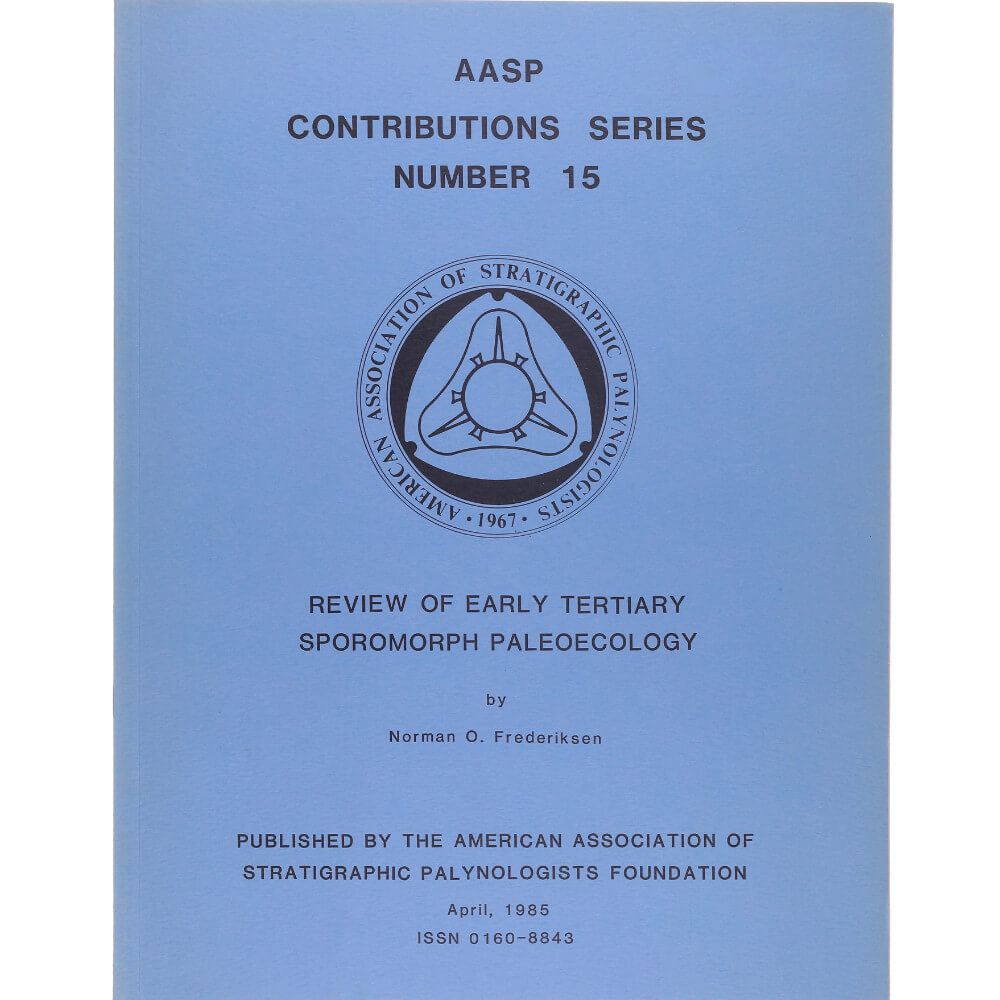Contributions Series Nr. 15 (PDF)
$4.00
Review of Early Tertiary Sporomorph Paleoecology
Norman O. Frederiksen
1985
PDF only
98 pp.
Description
Abstract
Since the beginning of Early Tertiary sporomorph studies in the 1930’s, many palynologists have attempted to gain at least some paleoecological information from their assemblages. In this paper, I have reviewed the types of data that have been collected and the interpretations that have been made on the basis of these data.
By far the best known Early Tertiary plant communities are those of coastal brackish-water environments, because (1) these are simpler, far less diverse communities than most others, (2) they seem to have remained stable much longer than many other communities, and (3) the paleoecology can be reconstructed more accurately than for any other communities. A considerable amount is also known about the composition of coastal-plain freshwater peat-forming swamp communities in certain regions, and about lateral and successional changes in these communities; however, little information is available about how these changes related to ecological variations in the peat swamps themselves.
The least known paleocommunities are those of the continental interior, especially those of the uplands and mountains. However, meadow and marsh communities even of the coastal plains are still rather poorly known; comparatively few pollen taxa can be definitely attributed to herbs, and some aquatic herbs seem to have produced pollen grains that did not preserve easily. It is also possible that herbs were relatively poorly represented in Early Tertiary lowland communities. Shrub taxa are difficult to recognize because, at least in the modern flora, most genera and families that are represented by shrubs are also represented by trees; however, shrubs of Myricaceae and Cyrillaceae are thought to have been important members of many communities on the Early Tertiary coastal plains and perhaps formed widely distributed shrub communities of low diversity.
Many efforts at reconstructing plant communities of the Early Tertiary using sporomorph data have been rather simple, because only limited data were available. To make further progress, sophisticated statistical methods will often be necessary, methods that have been used by only a few palynologists to date. Such methods will be especially critical for understanding the paleoecology of Paleocene sporomorphs (because few of these can be assigned to modern taxa) and zoophilous forms (because relative frequencies of these grains are nearly always low). Furthermore, it is essential that sporomorph studies be integrated with investigations on the plant megafossils and on the mineralogy, chemistry, and other attributes of the sediments in which the spores and pollen grains are found.
In summary, much has been learned in the past 50 years about the paleoecology of Early Tertiary sporomorphs and plant communities, but, at least in regions of the world that have already been much studied, little additional substantial progress will be made in the future unless more sophisticated and particularly multidisciplinary studies are made.
